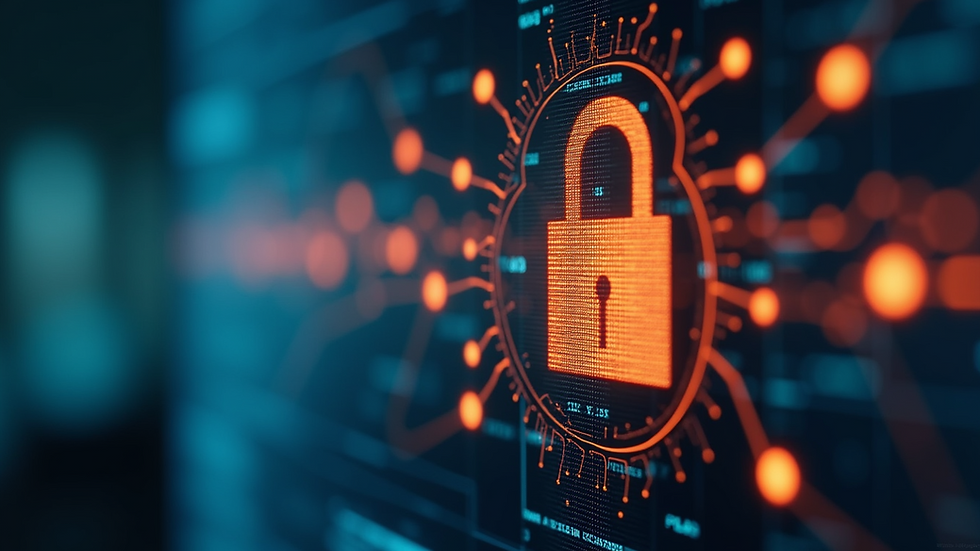Securing Your Digital Correspondence: Unseen Strategies for Email Safety
- protectyou360

- Jun 25
- 3 min read
In today’s digital age, email remains one of the most widely used forms of communication. From personal discussions to professional exchanges, our inboxes hold a wealth of sensitive information. Unfortunately, this convenience also makes emails a prime target for cybercriminals. The good news is that there are several strategies you can implement to keep your email secure. This blog post will explore effective methods to protect your digital correspondence, ensuring that your private information remains safe from prying eyes.
Understanding Email Threats
To effectively secure your email, it's crucial first to understand the types of threats you might encounter. Email threats typically fall into three main categories: phishing attacks, malware, and unauthorized access.
Phishing attacks are increasingly common, where scammers impersonate legitimate entities to trick you into providing personal information. These emails often contain links or attachments that appear harmless but can lead to stolen credentials or malware installation.
Malware, on the other hand, can be embedded in email attachments or links, compromising your system once clicked. Unauthorized access occurs when someone obtains your login credentials and gains access to your email account. These threats underscore why email safety is paramount.
Creating Strong Passwords
One of the simplest yet most effective ways to secure your email is by using strong, unique passwords. A strong password should include a mix of uppercase letters, lowercase letters, numbers, and symbols. Aim for a minimum length of 12 characters, and avoid using easily guessed information, such as birthdays or names.
Consider using a password manager to store and generate complex passwords. This not only saves you time when logging in but also adds an extra layer of security by ensuring that you aren't reusing passwords across multiple accounts.
Enabling Two-Factor Authentication
Another critical strategy in maintaining email security is enabling Two-Factor Authentication (2FA). This additional layer of security requires you to verify your identity with something you know (your password) and something you have (like a mobile device).
When 2FA is enabled, even if a hacker obtains your password, they will still require access to your verification method. This significantly reduces the risk of unauthorized access and thus secures your email communication.
Being Aware of Phishing Attacks
Education is a vital aspect of email safety. Familiarize yourself with common signs of phishing attempts. Look for suspicious sender addresses, generic greetings, and grammatical errors in emails. When receiving unexpected requests for sensitive information, always verify with the sender directly before responding.
Additionally, hovering over links to check their actual destinations can help identify scams. If an email looks wrong or raises red flags, don’t hesitate to delete it or report it as phishing.
Regularly Updating Software
Keeping your software updated is essential in the fight against email threats. Software developers frequently release updates that patch vulnerabilities. Make it a habit to regularly update your operating system, email applications, and antivirus tools to keep your systems secure.
Consider enabling automatic updates, so you don’t have to remember to check manually. This practice provides peace of mind, knowing that your system is fortified against the latest threats.
Using Secure Connections
When accessing your email, ensure you are using a secure internet connection. Avoid using public Wi-Fi networks for checking your email, as these can expose your data to hackers. If you must use public Wi-Fi, consider using a Virtual Private Network (VPN) to encrypt your internet connection.
Using secure connections also extends to the email service provider itself. Ensure that you are using an email service that offers encryption for emails both in transit and at rest.
Regularly Reviewing Account Access
Lastly, take the time to review the devices and services connected to your email account. Most email providers offer security settings where you can see active sessions and devices. Regularly check this list and remove any unknown or unused devices to prevent unauthorized access.
Be proactive. Set a reminder to review your settings and access every few months to maintain a high level of security.
Conclusion
Securing your email is an ongoing effort that requires awareness and proactive strategies. By applying the methods discussed, such as creating strong passwords, enabling two-factor authentication, and staying informed about phishing attacks, you can significantly enhance the safety of your digital correspondence. As technology continues to evolve, never underestimate the importance of vigilance and appropriate safety measures in protecting your most sensitive communications.

In our digitally connected world, your email might very well be your gateway to numerous opportunities, relationships, and sensitive information. By implementing the strategies mentioned above, you can confidently navigate your email communications while knowing you’re protected against potential threats. Remember, the key to a safe email experience lies in your hands!



Comentarios